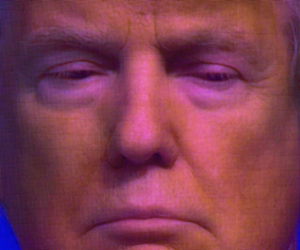The United States Supreme Court yesterday handed down its long awaited decision in United States v. Stevens. Full opinion here. For those who may have forgotten the factual background, Stevens was a pit bull aficionado who sold various pit bull related items over the internet. When his home was raided, authorities found a video, filmed in Japan, of dog fighting. Stevens was charged under 18 U. S. Code, section 48, which prohibits the creation, sale or possession of materials depicting animal cruelty. The law, passed in 1999, was intended to outlaw “crush videos.”
Crush videos, based on a sexual fetish, most commonly depict a woman killing an animal by crushing it with her feet, often while wearing stiletto heels. The statute reads, in pertinent part,
Ҥ48. Depiction of animal cruelty
(a) CREATION, SALE, OR POSSESSION.—Whoever knowingly creates, sells, or possesses a depiction of animal cruelty with the intention of placing that depiction in interstate or foreign commerce for commercial gain, shall be fined under this title or imprisoned not more than 5 years, or both. …
(c) DEFINITIONS…1) the term ‘depiction of animal cruelty’ means any visual or auditory depiction, including any photograph, motion-picture film, video recording, electronic image, or sound recording of conduct in which a living animal is intentionally maimed, mutilated, tortured, wounded, or killed, if such conduct is illegal under Federal law or the law of the State in which the creation, sale, or possession takes place, regardless of whether the maiming, mutilation, torture, wounding, or killing took place in the State…”
At trial in federal district court, Stevens moved to have the charges dismissed on First Amendment grounds. The trial judge denied the motion and Stevens was convicted. The Court of Appeals reversed the conviction on free speech grounds, and the Justice Department sought review by the Supreme Court. In an 8-1 decision, written by Chief Justice Roberts, the Supreme Court agreed with the Court of Appeals that the statute was an unconstitutional violation of the First Amendment.
The decision is one of facial constitutionality. That is, the statute was unconstitutional “on its face”. Statutes can also be found to be facially fine, but unconstitutional “as applied” under the particular circumstances of the case, but that standard was not used here. The first test used by a court in determining constitutionality is “facial”. If facially unconstitutional, the case ends. If a statute passes the facial constitutionality test, the court moves on to constitutionality as applied.
Within the “facial” test, the Supreme Court found the statute to be overbroad and thus unconstitutional as written. Overbreadth is a well established concept in stare decisis, precedent. It means that a statute intended to outlaw one activity is written so broadly that it would also outlaw activities that were intended to remain legal. Overbreadth is the first cousin, legally, of vagueness or the inability to clearly determine from the statute what is and is not legal.
Here’s the problem the Court saw in the Stevens case. The statute purported to outlaw the depiction, sale or possession of depictions of certain activities if those activities were illegal in the particular state where the depictions were produced, distributed to or from, or possessed. The example the Court used [they could have chosen from many] was that depictions of legal hunting or trapping that involved injuring or killing an animal could be criminal under the statute. The United States has 56 jurisdictions, including the 50 states, the territories and Washington, D. C. Hunting is illegal in Washington D. C.
To illustrate the problem: if a person buys a hunting magazine in a Texas airport (hunting is legal in Texas), reads it on the plane and takes it with him when he deplanes in Washington, D. C. (where hunting is illegal), s/he would be subject to arrest and prosecution under federal law for entering Washington, D. C. with the magazine. Similar results could arise emailing such depictions to a person staying in a Washington, D. C. hotel on business. That would be distribution on one end and possession by the person at the hotel. The same could occur if one state allowed controlled buffalo hunts, but another state outlawed buffalo hunting.
Anyone depicting an animal being wounded or killed in any context would have 56 different jurisdictional laws to address to know where the depictions could or could not be depicted, distributed or possessed. Meanwhile, people in a restrictive jurisdiction like D. C. would be committing a federal crime based on conduct, which, if committed in Texas, would not be a federal crime. The law was deemed overbroad, on its face, and unconstitutional.
The Court further found that depictions of animal cruelty were not within the traditional exceptions to the First Amendment: obscenity, defamation, fraud, incitement to violence or crime. The Court then declined to add animal cruelty depictions to the list of First Amendment exceptions. In doing so, they recognized the illegality of animal cruelty and did not rule out the possibility of another statute, more tightly written, surviving constitutional scrutiny.
Animal Rights activists have reacted negatively to the decision. PETA called it “Sad, Bad News”. Another take from an animal rights activist and lawyer who has been interviewed in the past for TMV is here. Most Bill of Rights organizations and journalists applauded the decision.
The decision provides considerable protection to those who purchase and possess materials like crush videos. Those who participate in the actual animal cruelty remain subject to criminal animal cruelty laws. Photographers, videographers and others who record such depictions could well be found criminally liable as co-conspirators or under aid and abet laws. Additionally, a criminal conspiracy by which the members profit from the criminal enterprise of animal cruelty may ensnare participants, recorders and distributors under RICO laws.
The case has been decided, but the issue is not dead.
[Author’s Note: The photo at top is of the aftermath of a dog fight. It is not my inclination to publish such pictures were it not apropos to the subject in showing an actual depiction of animal cruelty for the reader to assess]
Cross posted at Elijah’s Sweete Spot, where COMMENTS/DISCUSSION are Disqus™ enabled.
Contributor, aka tidbits. Retired attorney in complex litigation, death penalty defense and constitutional law. Former Nat’l Board Chair: Alzheimer’s Association. Served on multiple political campaigns, including two for U.S. Senator Mark O. Hatfield (R-OR). Contributing author to three legal books and multiple legal publications.
















